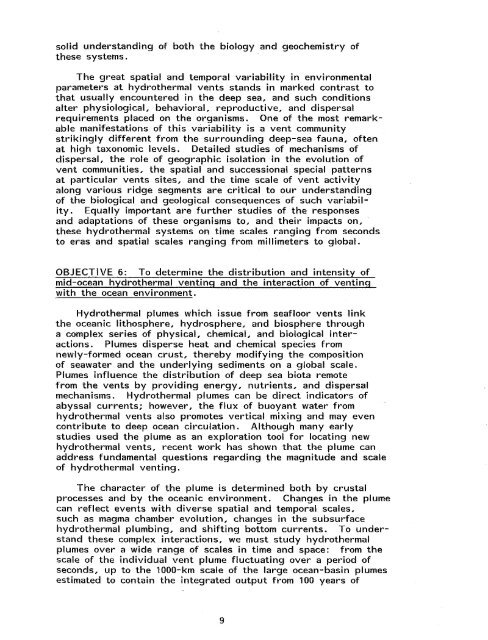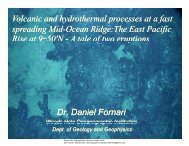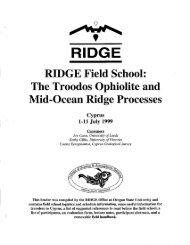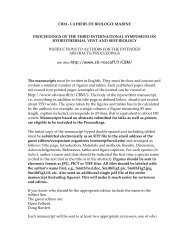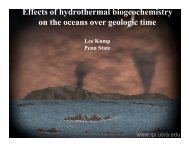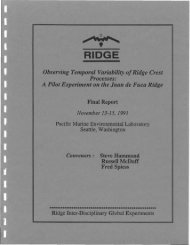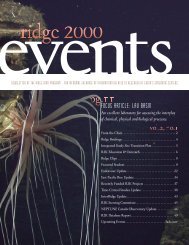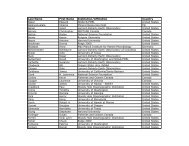Create successful ePaper yourself
Turn your PDF publications into a flip-book with our unique Google optimized e-Paper software.
solid understanding of both the biology and geochemistry of<br />
these systems.<br />
The great spatial and temporal variability in environmental<br />
parameters at hydrothermal vents stands in marked contrast to<br />
that usually encountered in the deep sea, and such conditions<br />
alter physiological. behavioral, reproductive, and dispersal<br />
requirements placed on the organisms. One of the most remarkable<br />
manifestations of this variability is a vent community<br />
strikingly different from the surrounding deep-sea fauna, often<br />
at high taxonomic levels. Detailed studies of mechanisms of<br />
dispersal. the role of geographic isolation in the evolution of<br />
vent communities, the spatial and successional special patterns<br />
at particular vents sites, and the time scale of vent activity<br />
along various ridge segments are critical to our understanding<br />
of the biological and geological consequences of such variability.<br />
Equally important are further studies of the responses<br />
and adaptations of these organisms to, and their impacts on,<br />
these hydrothermal systems on time scales ranging from seconds<br />
to eras and spatial scales ranging from millimeters to global.<br />
OBJECTIVE 6: To determine the distribution and intensity of<br />
mid-ocean hydrothermal venting and the interaction of venting<br />
with the ocean environment.<br />
Hydrothermal plumes which issue from seafloor vents link<br />
the oceanic lithosphere, hydrosphere, and biosphere through<br />
a complex series of physical, chemical, and biological interactions.<br />
Plumes disperse heat and chemical species from<br />
newly-formed ocean crust, thereby modifying the composition<br />
of seawater and the underlying sediments on a global scale.<br />
Plumes influence the distribution of deep sea biota remote<br />
from the vents by providing energy, nutrients, and dispersal<br />
mechanisms. Hydrothermal plumes can be direct indicators of<br />
abyssal currents; however, the flux of buoyant water from<br />
hydrothermal vents also promotes vertical mixing and may even<br />
contribute to deep ocean circulation. Although many early<br />
studies used the plume as an exploration tool for locating new<br />
hydrothermal vents, recent work has shown that the plume can<br />
address fundamental questions regarding the magnitude and scale<br />
of hydrothermal venting.<br />
The character of the plume is determined both by crustal<br />
processes and by the oceanic environment. Changes in the plume<br />
can reflect events with diverse spatial and temporal scales,<br />
such as magma chamber evolution, changes in the subsurface<br />
hydrothermal plumbing, and shifting bottom currents. To understand<br />
these complex interactions, we must study hydrothermal<br />
plumes over a wide range of scales in time and space: from the<br />
scale of the individual vent plume fluctuating over a period of<br />
seconds, up to the 1000-km scale of the large ocean-basin plumes<br />
estimated to contain the integrated output from 100 years of<br />
9


